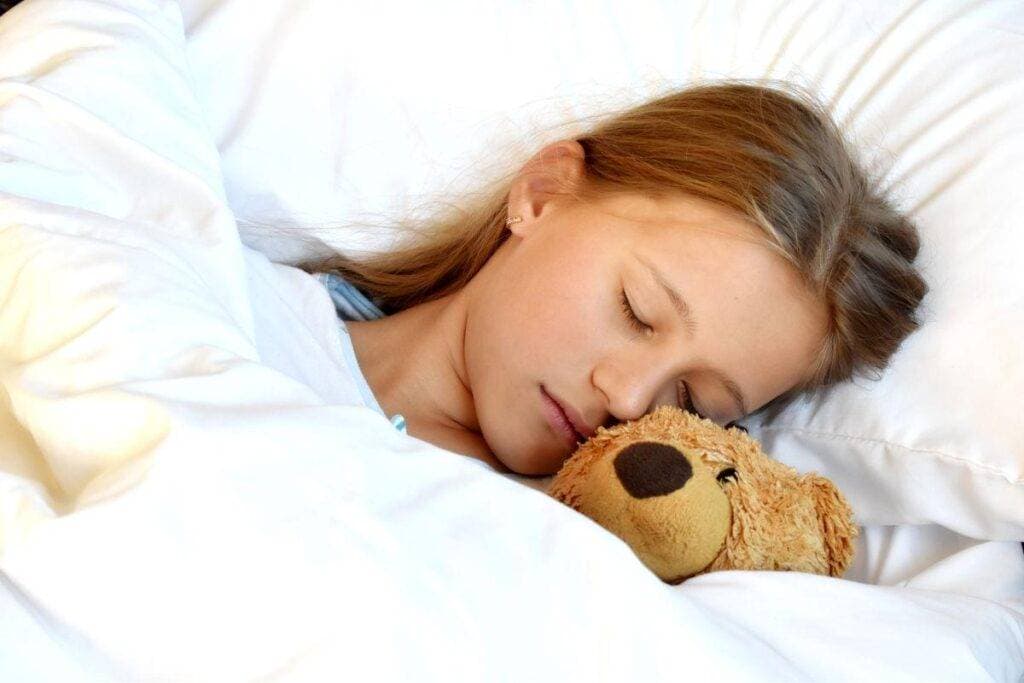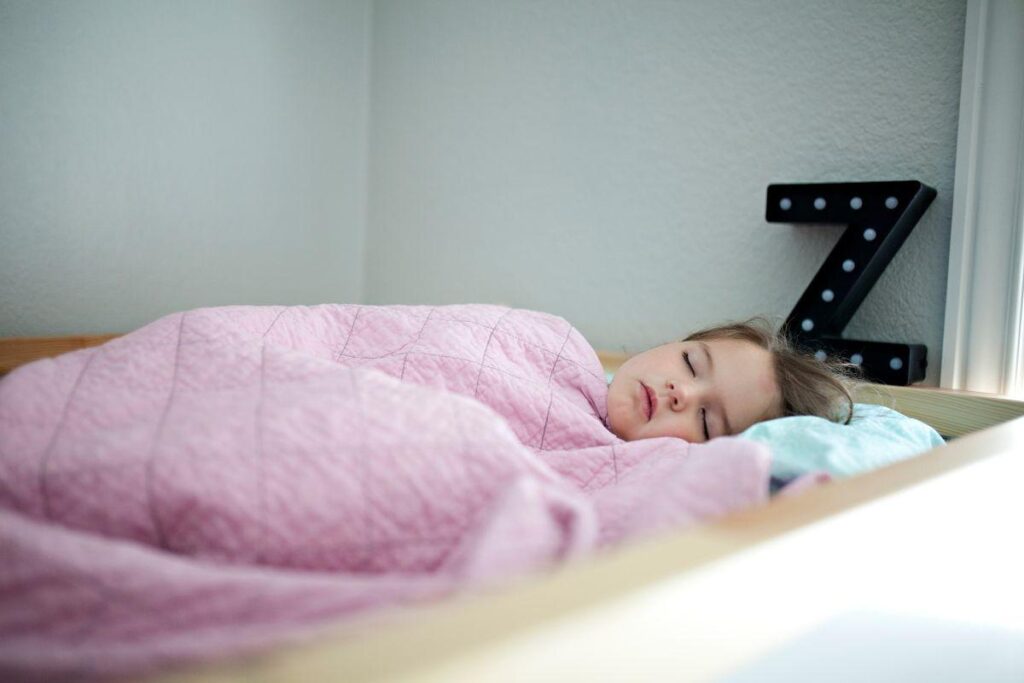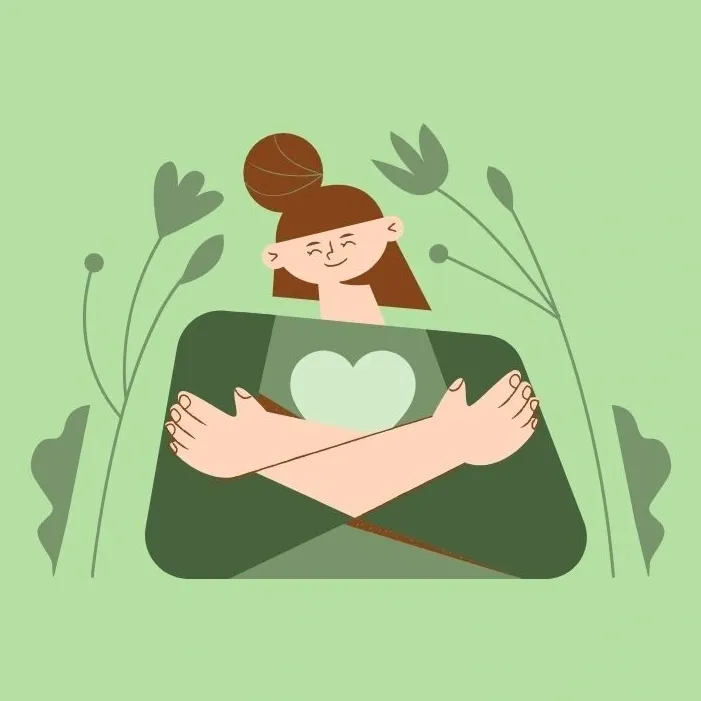
Many kids struggle to fall asleep and stay asleep. Sleep anxiety is a common reason for bedtime stress of both parents and children. The good news is there are simple ways you can help your child and create a healthy, relaxing bedtime routine.
Can anxiety affect my child’s sleep?
Yes. Anxiety can affect your child’s ability to get the amount and quality of sleep they need to function as their healthiest, happiest selves.
If a child struggles with sleep problems, this creates more stress and the cycle perpetuates.
Understanding and addressing your child’s anxiety to create good sleep habits and minimise sleep disturbance is fundamental to their physical and emotional wellness.
Your child’s stress response system
No matter our age, we all have the same physiological “alarm” response to stress; known as flight, fight, or freeze.
When the stress response is activated, the cortisol hormone is released into the body, preparing it to tackle imminent danger, whether that means fighting or running away.
Cortisol boosts the heart rate, raises blood sugar for energy, and breathing increases. Experiencing a rush of heat or sweat is also common.
When kids are persistently anxious this creates a continual “false alarm” response (there is no real danger) and cortisol levels are consistently elevated. Falling asleep is a challenge with high levels of cortisol interfering with healthy sleep habits and dysregulation of the sleep-wake cycle.
What are the signs of anxiety in a child?
- Angry behaviour and irritability
- Changing appetite
- Wetting the bed
- Muscle
- Nightmares
- Muscle tension and nail-biting
- Insomnia
- Stomach pains and headaches
- Persistent fatigue
- Getting in trouble at school
While some children are generally anxious, sleep anxiety can present at night even if a child is usually well adjusted and not fearful in other areas of their life.

What causes sleep anxiety in kids?
Kids worry about different things at different ages. It’s important to identify the source of your child’s fears and how they create sleep issues.
When it comes to sleep anxiety, reasons your child may struggle to fall asleep include:
Separation anxiety
Toddlers can experience separation anxiety at night, while they’re tucked up in bed and you’re in the next room. Staying in your child’s room until they feel sleepy or fall asleep before leaving can help with their fear. Giving them something to snuggle at bedtime that reminds them of you, like a blanket you’ve made or even an item of clothing, can help too.
Nighttime fears of monsters and “baddies”
It’s common for younger children to be scared of darkness, loud noises, monsters, insects or certain animals. They may believe something scary is lurking in or outside their room at night, waiting to “get them”.
Thoughts of monsters, aliens, and “bad guys” can send your child’s mind into fearful overdrive. It’s the overall theme that someone or something out there is going to hurt them and their family.
Ruminating on thoughts and problems
Older kids might find it hard to switch off their minds at night.
Worrisome thoughts are in overdrive making it hard to go to sleep. They may think about school, a problem with a friend, changing family relationships, such as divorce, or big changes like moving home.
How can I help my anxious child sleep and relax
Parents can explore a variety of relaxation techniques to address anxiety-induced sleep problems.
Grounding strategies
Grounding techniques help reduce stress caused by the difficult emotions kids may be struggling with. Grounding techniques for parents to try include:
Deep breathing
Practising deep ‘belly breathing’ calms kids down by lowering the heart rate and reducing the amount of adrenaline in their bodies. Focusing on deep breaths also distracts from anxious thoughts.
Guide your child to place a hand on their belly and breathe in slowly until their belly rises like a balloon. Then, they breathe out completely while focusing on how their belly is flattening out.
Present awareness
Engage your child’s senses (sight, taste, touch, hearing, and smell) with activities to ground their attention in the present moment.
A simple present awareness activity is engaging the sense of touch by handling different things like shells, stuffed toys, splashing water, smooth tiles, etc. Then ask your child what they think about the object. This focused their attention on the present.
Progressive muscle relaxation
This grounding technique involves tensing certain muscles in the body, one at a time, and then relaxing them. Let your child know that by relaxing their muscles, they can also relax their feelings
A few examples to try:
Hands and arms – Ask your child to imagine he is holding a lemon and then squeezing it as hard as possible with one hand. Then, ‘drop’ the lemon to the floor and let his arm go limp. Repeat 3 times for each hand.
Feet – While sitting, your child can scrunch his toes together as hard as he can, curling them under, hold for 5 seconds and then release.
Challenge unhelpful thoughts
Like adults, how a child feels is usually a response to what they’re thinking. If thoughts are negative and ruminating, they’ll likely feel on edge.
Parents can help their kids to quieten worried thoughts and guide them to consider alternative, more positive thoughts about the source of their fears.
Automatic negative thoughts (ANTS)
Automatic negative thoughts, also known as ANTS, are those unhelpful thoughts your child defaults to in certain situations. ANTs then affect their actions and emotions, creating or reinforcing a negative story about themselves or the world.
Work with your little one to find different ways to change worried thoughts into something more helpful.
Ask them to write out a list of their ANTS, for example, “I’m not smart at school”. This might be the default thought when they don’t answer a question right.
A more helpful thought could be “Everybody gets things wrong sometimes.”
Don’t believe everything you think
Remind your child that just because they feel worried about something doesn’t mean their fear is real.
Introduce a new perspective
Identify the source of worry for your child then talk through another perspective of the situation to calm their fears.
For example, if separation fears at night are the issue, let them know you’ll check in on them and remind them how close and easily accessible your bedroom is. This reassures your child that sleeping in their bed alone isn’t as scary as it seems.

Tips for healthy sleep habits to get your child to fall asleep
Getting your child into a routine in the evening with good sleep hygiene will make falling asleep easier and reduce night waking.
Be consistent with bedtime
Going to bed and waking up at the same time each day, even on weekends, can help your child get restful and enough sleep. Studies show that going to bed early is beneficial for young children.
Introduce grounding activities
Choose some of the grounding activities outlined earlier to create a pre-bed relaxation routine. A few minutes of progressive muscle relaxation or deep breathing works well before bed.
Read to reduce anxiety and fall asleep
A child may have many stressful thoughts running through their little mind.
Reading a book aloud together with your child at night gives them something to focus on other than worrisome thoughts.
Reading is calming and can lead to a more relaxed state for child sleep.
Book time is also an opportunity to introduce your child to characters, emotions and stories they can connect and identify with.
This can reassure them that other children have the same feelings and fears they do and there is a way to overcome them. The children’s book After the Fall: How Humpty Dumpty Got Back up Again by Dan Santat is a great example.
Gentle massage
Giving your little one a foot or back massage is a wonderful way to encourage a relaxed transition to sleep while you talk to them. Add calming essential oils such as lavender or chamomile.
Consider a soft yellow night light
While dark, quiet bedrooms are the bed environment for sleep, the comfort of light may help ease anxiety about nighttime “baddies” that lurk in the dark.
A 2018 study comparing white-blue light with yellow found that the yellow light was more effective in inducing sleepiness. Thus, soft yellow light can encourage sleep on both a physical and emotional level.
Cut out stimulating drinks and snacks before bed
Avoid high energy levels before bed by cutting out caffeinated drinks in the late afternoon and evening as caffeine exacerbates anxiety symptoms. Examples include energy drinks, iced teas, sweet teas, soft drinks, and iced coffee drinks.
Sugar is also a stimulant so keep pre-bedtime snacks free from added sugar. A few healthy examples include wholemeal bread with natural nut butter, low-sugar fruit (such as berries) with unsweetened yoghurt, cheese sticks, plain whole grain cereal and milk, or cheese and crackers.
Limit screen time before bed
Blue light emitted from phone and tablet screens makes it hard for your child to sleep. The blue light stimulates the brain and suppresses or slows the release of the sleep hormone melatonin, which is responsible for regulating the sleep/wake cycle. Create a technology-free night routine that begins an hour before bed by putting away tablets and phone screens.
Consider a weighted blanket
Weighted blankets include ball bearings, plastic pellets, glass beads, or other materials in their design that make them heavier than normal blankets. This weight can add an extra sense of security at night. A weighted blanket may be appropriate for children 4 years and older but speak with a health professional before allowing your child to use one.
Would you like more information?
If you’d like more information, or seek professional help, call us at Inspire Health & Medical on 1300 947 477 to book an appointment.







